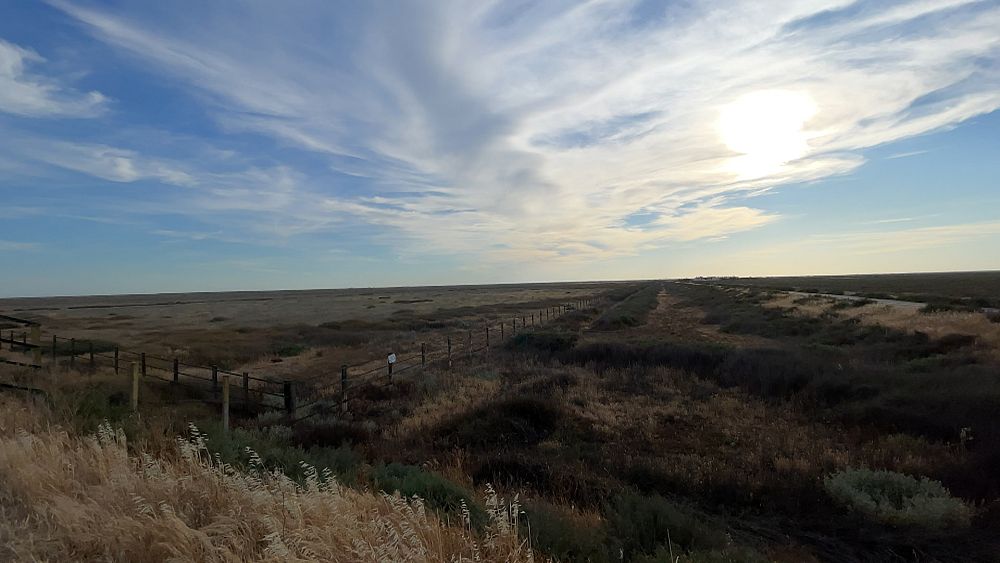Tracking water thieves in Southern Spain

This episode of EuronewsWitness brings you to Andalusia in southern Spain, where our reporter Hans von der Brelie is searching – and finding! – illegal water wells.
Two thirds of Spain are under threat of desertification. The climate crisis is heating up. And conflicts linked to the use of water are multiplying. Doñana, one of Europe’s most outstanding nature reserves, is one of those places.
Proctecting the water
Sturdy looking rangers are patrolling the border of the Doñana reserve. The intensive greenhouse-agriculture industry is edging itself closer and closer. Some 80% of Spain’s berry production is cultivated here. Strawberries are swigging the water of the bird’s paradise.
Illegal extensions and pumping stations are “mushrooming”. The ground is perforated and gets transformed into a kind of “Swiss cheese”. Antonio Santos, the unit leader of the Guadalquivir Hydrographical Confederation, took action: “In the past four years, we have closed 1116 illegal waterholes. “
In the forest, tensions rise. Farmers vigorously defend their boreholes. Sometimes Antonio must call in the Guardia Civil. Closing an illegal well is not easygoing. It’s a real paper-war, fought with legal notices and court procedures that can take up to eight years.
Farming rights
Doñana is protected by the European Union’s Natura-2000 label. The European Commission is concerned about a regional draft law, proposing to legalize irregular structures set up by berry producers.
The nature protection organisation WWF is worried too. Felipe Fuentelsaz names the problem: “There are 2000 of illegal hectares, and 1000 illegal boreholes. This is like the Wild West.”
Julio Diaz lobbies for the greenhouse-farmers of Lucena municipality, accusing the WWF of using “unscientific methods” and attacking the central government of Spain for not having channeled enough surface water from elsewhere in time.
While Julio Diaz is putting forward „100,000 jobs“, Doñana wildlife guide Sergio shows us the impact of the drought on migratory birds. Usually, Sergio counts 50.000 grey geese in his birdwatch-section. This year just came 1,200.
Sergio looks through his field-glasses: “It’s totally dry. Normally the lagoon is covered with water, and you should see thousands of birds. What happened? Is there only water for farmers? And no water for birds? We must share the water.”
Asked for a statement, UNESCO flagged a straightforward alert on Doñana to Euronews Witness :
- The World Heritage Centre is concerned about the situation of the Doñana World Heritage site.
- The increasing drying out of the water bodies in the property is directly affecting the populations of water birds and is further exacerbated by the recent exceptional drought and puts the exceptional biodiversity of the Natural Park at serious risk.
- In recent years, the World Heritage Committee – the governing body of the Convention, composed of 21 representatives of the 194 States Parties to the Convention – has issued regular warnings about the overexploitation of the aquifer and its potential impacts on the site.
- In 2021, the Committee requested Spain to urgently implement a “Special Management Plan of the Irrigation Zones located to the North of the Forest Crown of Doñana” , which foresees the closure of all illegal wells, in its current form without changes. The World Heritage Centre is continuing to work with the State Party to ensure this is done and the universal value of the site is protected.
- But recent reports of potential local decisions changing this plan have renewed concern about the conservation of the site.
- In September, the state of conservation of the site will again be examined by the World Heritage Committee. During this meeting, the Committee may take any necessary decision, including the possibility of inscribing the site on the List of World Heritage in Danger.
Source: Euro News














